What can you see and do on the River Moika?
- Museums: visit the Yusupov Palace where Grigory Rasputin was murdered, the Memorial-Apartment of Alexander Pushkin, or the Central Naval Museum
- Palaces: admire the opulent residences of St Petersburg’s aristocrats and imperial family which line the banks of the River Moika
- Green spaces: explore the Field of Mars, Mikhailovsky Garden and Summer Garden
- Walk or boat trip: set your own pace with a leisurely walk along the Moika, or spend an evening admiring the view from an open-top boat
River Moika. St. Petersburg
Weaving through the historical heart of St Petersburg, the River Moika was the home of St Petersburg’s elite for many centuries. It is lined by architectural marvels and interesting landmarks, making its granite embankments the perfect place for a summer stroll. While walking the length of the River Moika, making your way across islands and bridges, and through the opulent historical streets of St Petersburg, what should you look out for?
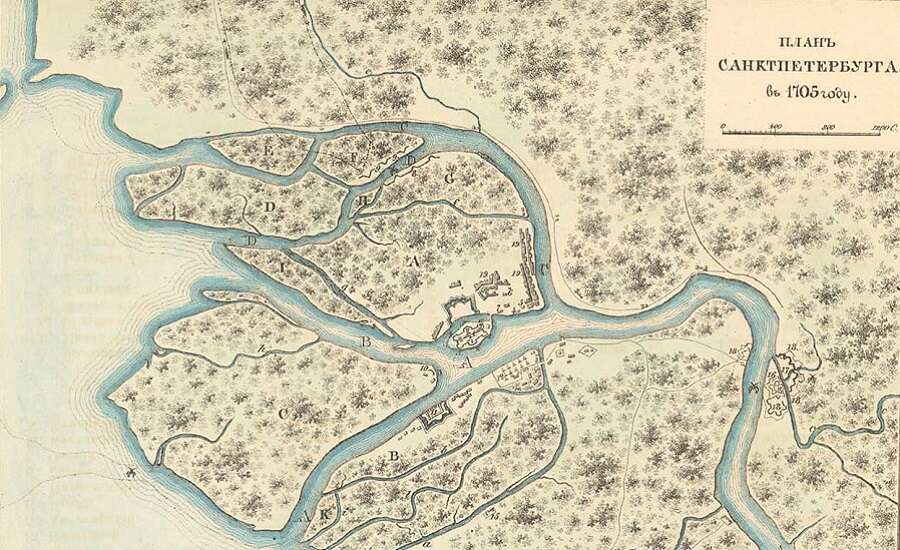
History of the River Moika
Despite its current beauty, the River Moika did not always provide the most romantic of settings. At the time of St Petersburg’s foundation, the Moika was a stagnant stream flowing from a swamp near the present-day Fields of Mars. However, the River Moika was one of the first places to be developed in the emerging city as it formed a natural border demarcating St Petersburg from the vast forests which unfolded beyond (the city boundary was later moved south to the Fontanka River). Peter the Great ordered the Moika to be connected to the Fontanka River, drained the swampland, and deepened the riverbed to allow boats to pass through the channel. Wooden embankments were erected along its banks as early as 1720, and the granite embankments so famous in St Petersburg today were built at the end of the 18th century.
Did you know? The origin of the River Moika’s name is disputed. According to one theory, it was inspired by the public baths which lay on the riverbanks, deriving its name from the Russian word for ‘washing’ – moika. Other historians have said that the Moika originally bore the name ‘Muya’, meaning ‘dirty, muddy’ in the language of the Izhora, a Finnish tribe indigenous to the area. As this word was too difficult for people to pronounce, the river was officially renamed ‘Moika’.
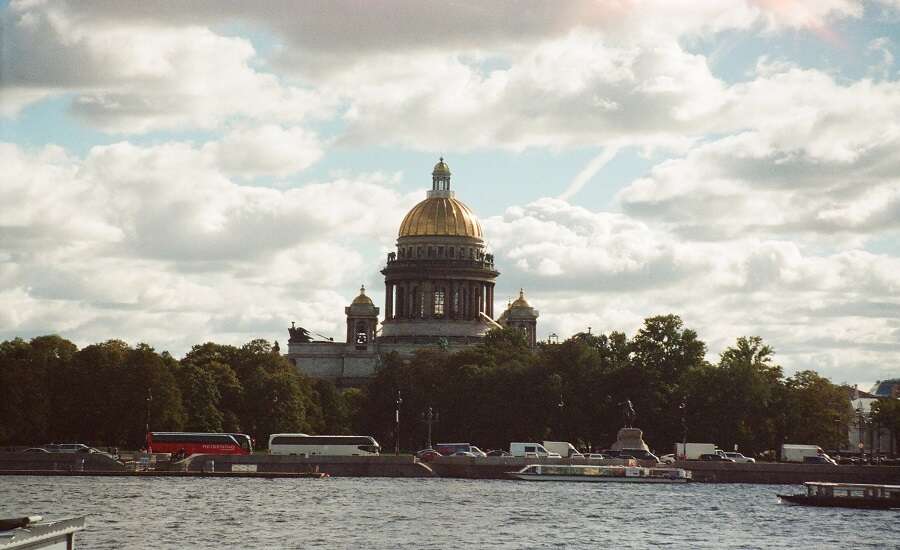
Photo by Aleksandr Neplokhov on Pexels
As St Petersburg grew and flourished, society’s rich and famous began building elaborate residences along the banks of the River Moika from the mid-1700s onwards. A century later, the Moika had become one of the most exclusive zones of St Petersburg, lined with mansions and palaces, banks and ministries. Nevertheless, its water remained dirty and smelly in comparison to the water of the Neva and Fontanka – so much so that the city authorities, fearing an epidemic of illness amongst the townspeople, banned them from cooking with and drinking water drawn from the Moika.
Did you know? Architectural wonders don’t just line the banks of the Moika, but stretch across the river, too. Sixteen bridges span the Moika, including the only coloured bridges in St Petersburg – named Green, Red, and Blue Bridge.
Today, we still wouldn’t recommend going for a swim in the River Moika (although you will see some brave souls water-skiing or even paddle-boarding along the picturesque waterway!) However, local people and tourists alike can appreciate the poetic beauty of St Petersburg with a stroll or boat trip along the River Moika. We’ve written a guide on which landmarks to look out for on your riverside journey.
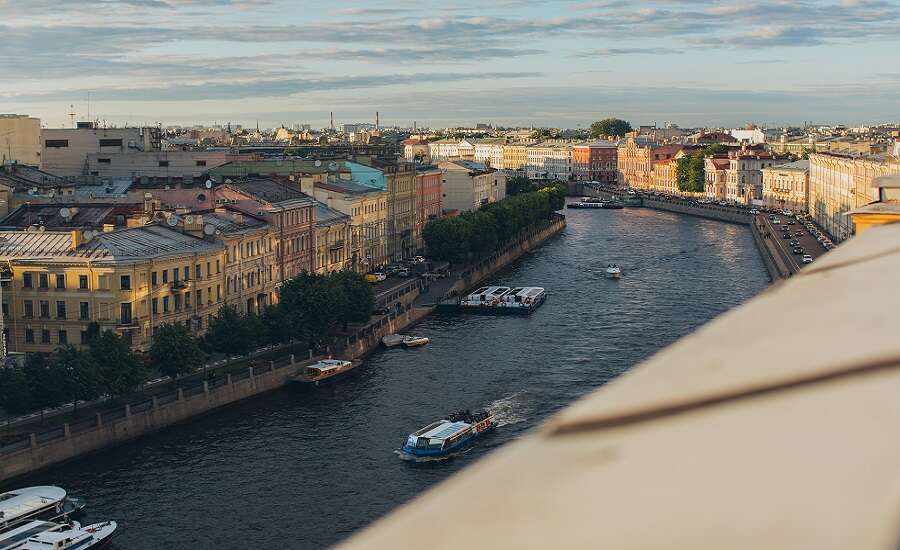
Photo on Pexels, CC0
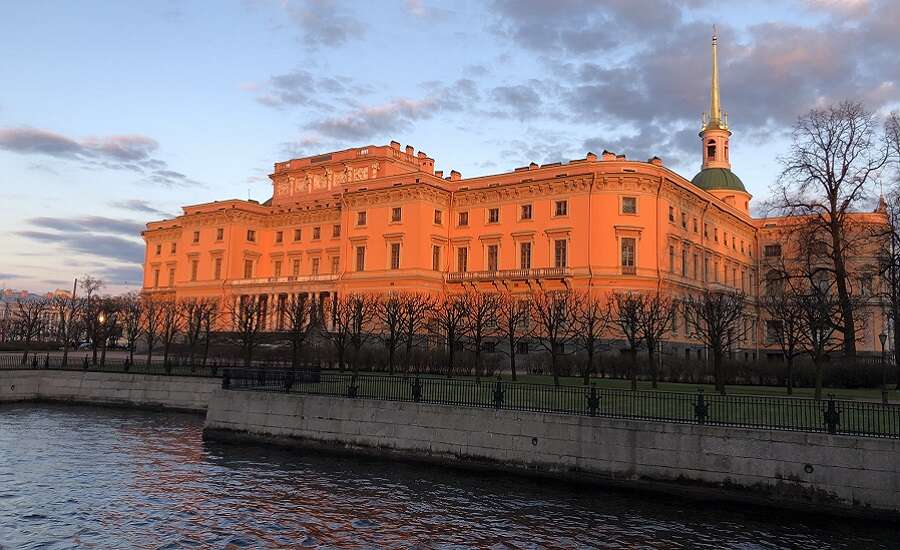
From the Fontanka River to Nevsky Prospekt
- Summer Gardens: this tranquil oasis is lined with verdant avenues, tree tunnels and ornamental walls of shrub, adorned with marble statues imported from Italy and punctuated with bubbling fountains. It is home to the Summer Palace of Peter the Great, the first palace built in his new capital.
- Mikhailovsky Castle: Tsar Paul I feared for his safety in the Winter Palace, and built the Mikhailovsky Castle as a safe haven from conspirators. His efforts were in vain, however, as Paul was murdered in the castle just forty days after moving in. The castle is now occupied by a branch of the Russian Museum.
- Field of Mars: used over the centuries as a military training and parade ground, for city festivities, and as a burial place for heroes of the October Revolution, today this large green space is a popular spot for picnics.
- Mikhailovsky Garden: backing onto the Mikhailovsky Palace (home of the Russian Museum), the Mikhailovsky Garden unites English and French landscaping styles and was designed by famed architects Carlo Rossi and Bartolomeo Rastrelli.
- Main Imperial Horse Stables: founded in 1720 as the stables for Peter the Great’s court, this vast building unfortunately fell into disuse over the centuries. It remains abandoned to this day, although the square along its southern façade was transformed into the Fan Zone for the 2018 World Cup and for the 2021 Euro Cup.
- Memorial Apartment-Museum of Alexander Pushkin: after being mortally wounded in a duel, Russia’s beloved poet, Alexander Pushkin, returned to his apartment on the River Moika, where he died. This memorial museum explores Pushkin’s life in St Petersburg and has been restored with period furniture.
- Winter Canal: one of St Petersburg’s classical views can be seen here, where the short Winter Canal empties from the Moika into the Neva, spanned by a wide archway connecting the Big Hermitage and the Hermitage Theatre.
- Palace Square: the main square of St Petersburg lies just a few steps from the River Moika. Make a quick detour here to admire the Winter Palace and General Staff Building.
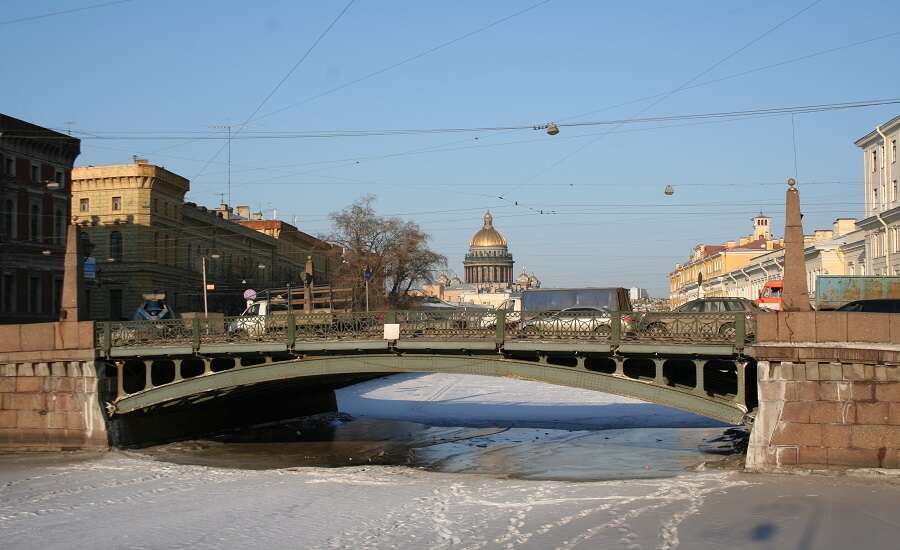
Photo by В. В. Медейко on Wikipedia, CC BY 2.5
From Nevsky Prospekt to Potselyuev Bridge
- Stroganov Palace: on one side of the Green Bridge, where Nevsky Prospekt crosses the River Moika, is the Stroganov Palace – a late-Baroque palace designed by Bartolomeo Rastrelli.
- Chicherin House: opposite the Stroganov Palace lies this striking early-Classical palace, which is occupied today by the Taleon Imperial Hotel.
- Au Pont Rouge: this Art Nouveau masterpiece takes its name from the Red Bridge spanning the River Moika. The preferred retail destination for the imperial family and aristocracy, each floor of the building boasts a different Art Nouveau design – floral motifs, elaborate windows, and layered metalwork on the roof’s glass dome.
- Mariinsky Palace: the daughter of Tsar Nicholas I was gifted this remarkable palace upon her wedding to the Duke of Leuchtenberg, and today it is the seat of the Legislative Assembly of St Petersburg. The Mariinsky Palace sits next to the Blue Bridge, the widest bridge in the city.
- St Isaac’s Square: across the Blue Bridge from the Mariinsky Palace lies St Isaac’s Square, a small garden lined with trees and benches. This is a fantastic spot from which to admire St Isaac’s Cathedral, the tallest building in the city centre.
- Yusupov Palace: the residence of one of Imperial Russia’s most illustrious families is most famous for the story of murder and intrigue which unfolded in its gilded halls – the murder of mystic monk Grigory Rasputin. Today, the Yusupov Palace is open to visitors, and its restored halls are known as an ‘encyclopaedia’ of opulent aristocratic interiors.
- Potselyuev Bridge: the aptly-named ‘Bridge of Kisses’ is one of St Petersburg’s most iconic places and epitomises the romance of the Northern Venice. The bridge is shrouded in centuries of legends, and it is said that any lovers who kiss there will be guaranteed a long and happy life together.
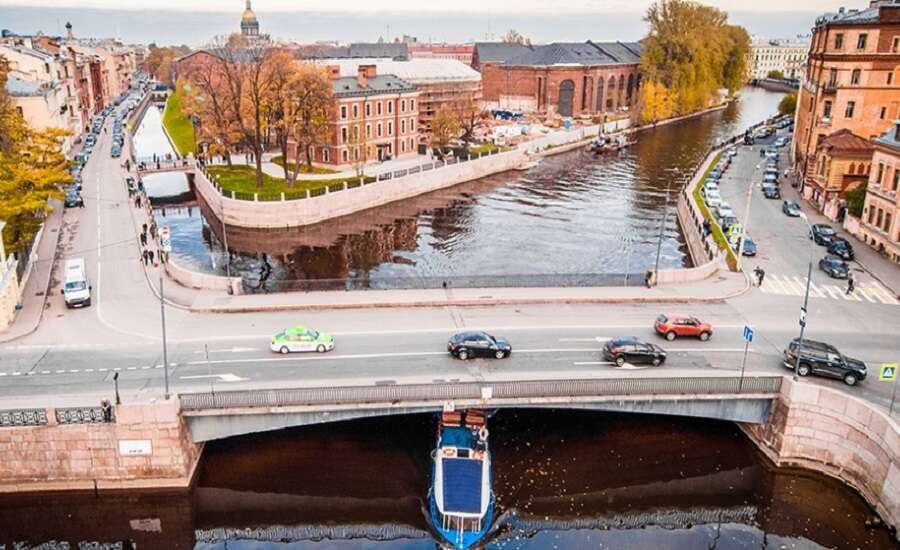
Photo on https://petersburg24.ru, CC0
From Potselyuev Bridge to the River Pryazhka
- Central Naval Museum: for those interested in maritime history, this is the place to visit. It is one of the world’s largest naval museums, documenting Russian seafaring from Peter the Great’s era until the present day.
- New Holland: this manmade island, constructed for Peter the Great’s navy, has been completely revamped into one of St Petersburg’s most popular attractions. There you will find excellent cafes and restaurants, outdoor sports and games facilities, an ice-rink in winter and a beach in summer, and a rich cultural programme including outdoor cinema screenings, concerts, theatre performances, lectures and more.
- From this point onwards, the River Moika empties out past the docklands and into the ocean. But your journey around St Petersburg doesn’t have to end here. After passing New Holland, turn left down Pisareva Street and walk towards Dekabristov Street, following the latter past the Mariinsky Theatre and weaving your way back towards the city centre. Alternatively, follow the Moika further westwards to the tranquil River Pryazhka, stroll along its quiet grassy embankments, and explore Kolomna – one of St Petersburg’s most unique and atmospheric historical neighbourhoods, rarely visited by tourists.





